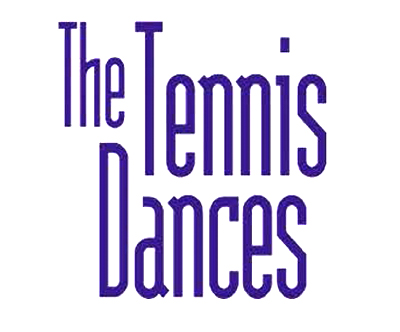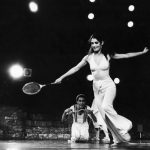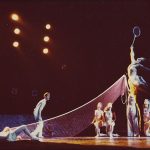
1979 for 4-12 dancers
28+ minutes
The Tennis Dances remains Louise Reichlin’s most acclaimed work, with countless performances at outdoor festivals and major theaters for audiences of thousands, to small galleries and elementary school stages.
The work provides an overview of modern society using tennis as a metaphor. The moods range from a lighthearted bluegrass section to a tennis match ritualized and fought to the death. The complete work is in eleven sections and uses music by Fanshawe, Ives, Stravinsky, Mihaud, Sarkisian and Orff, as well as medieval and electronic scores.
Press Quotes
"Louise Reichlin created a sensation with The Tennis Dances. It is among the most impressive group works created here in recent years. ...It has drama, humor, finely realized performances, and mounting strength."
"Among the group pieces, Louise Reichlin's Tennis Dances, for a dozen members of Los Angeles Choreographers & Dancers, had to be the most provocative. A potpourri that vaguely satirizes pomposity, exoticism, period cutesiness and contrived elegance, that probes ancient mystery and indulges contemporary whimsy - all with the unlikely but clever metaphor of racquets and nets."
"One of Louise Reichlin's most effective works is her signature piece, Tennis Dances, which is a unique dance that is almost cinematic in its effects. She creates on stage the illusion of long shots, montages, quick cuts, and individual close-ups that are usually seen only in the film or video media."
"Clever evocations of theatre dance styles...everything from Fokine and Graham to Bejart and beyond, all unfied by rackets and nets and tennis balls."
"(The program) ended brilliantly, thanks to Reichlin's Tennis Dances, which dates back to 1979. In this ten-part suite the tennis court becomes a metaphor, of course, for life's stage. And life, as Reichlin sees it, is indeed a stage, one crowded with a broad spectrum of attitudes. ...Here is a choreographer who arguably picks up the feminist point of view where Isadora Duncan and Ruth St. Denis left off. To observe the universe as it is inhabited by women, she harks back to ancient times and mythic symbols."

